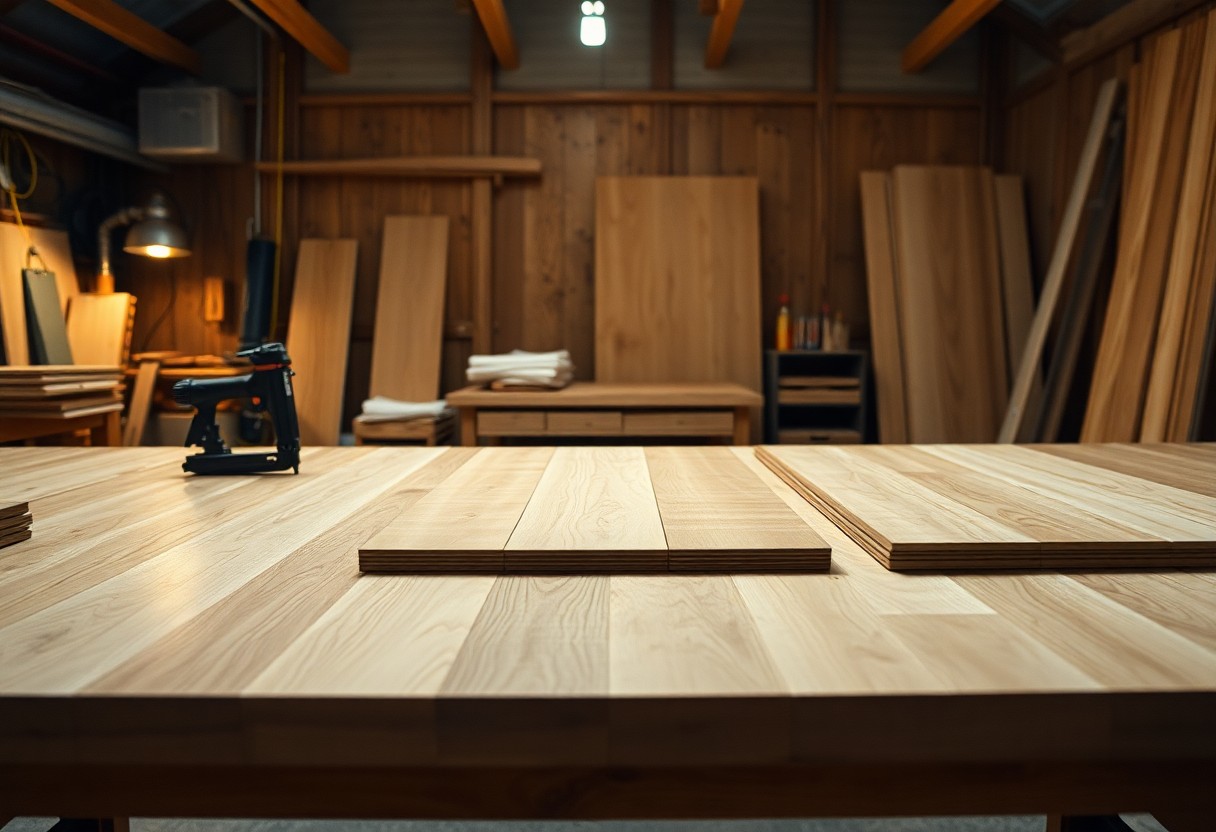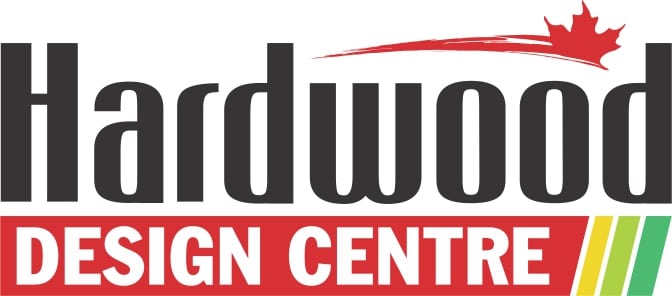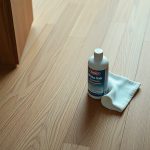Over time, selecting the proper installation method for your white oak flooring can greatly influence the durability and appearance of your space. With various techniques available, including nail-down, glue-down, or floating methods, you must consider factors such as your subfloor type, desired aesthetic, and skill level. This guide will walk you through the considerations you need to make, helping you decide which installation method suits your home best and ensures that your investment in white oak flooring meets your long-term expectations.
The Impact of Subfloor Types on Installation Choices
The type of subfloor you’re working with significantly influences your installation options for white oak flooring. Different subfloor materials dictate the compatibility and method of installation, impacting the long-term performance and durability of your flooring. Factors such as moisture levels, stability, and structural integrity must be considered before deciding on your installation approach. Your options may include glue-down, nail-down, or floating methods based on the subfloor type.
- Concrete subfloors often require moisture barriers to prevent damage.
- Wood subfloors can provide a stable, breathable environment for installation.
- Different installation methods cater to different flexibilities and expansion properties.
- Consider local climate conditions that may affect subfloor moisture levels.
- Knowing subfloor types allows for a smoother installation process and better flooring longevity.
Concrete vs. Wood Subfloors
Concrete subfloors are common in basements and below-grade installations, while wood subfloors are typically found on upper levels. For concrete, a moisture barrier is crucial to protect the flooring from dampness, which can lead to warping or mold growth. Wood subfloors offer a more forgiving surface for nail-down installations and can be more accommodating to seasonal expansion and contraction of the wood planks.
Assessing Moisture Levels and Their Implications
Moisture levels of your subfloor determine the safety and success of your installation. High moisture content in subfloors can undermine adhesive bonds, promote mold growth, and damage the flooring itself over time. Testing for moisture using a moisture meter is advisable. Experts recommend that the moisture level for wood subfloors should not exceed 12%, while concrete subfloors should ideally be below 3% for adhesive applications. Ensuring your subfloor’s moisture content falls within these ranges will enhance the longevity and stability of your white oak flooring.
Taking the time to assess moisture levels can significantly impact your flooring project’s success. If moisture content is too high, you might need to utilize a moisture barrier, or wait for the conditions to improve before installation. Addressing potential moisture issues before laying your floor not only protects the investment you’ve made, but also contributes to the overall health of the living environment. Keeping track of humidity levels in your space will further guide your decisions regarding installation methods and materials.

Exploring Installation Methods: Nail, Glue, and Float
Understanding the various installation methods available for white oak flooring helps you make informed decisions tailored to your space and lifestyle. Each method—nail-down, glue-down, and floating—offers distinct advantages and considerations that impact durability, aesthetics, and ease of installation. Evaluating your preferences, subfloor condition, and environmental factors will guide you in choosing the best approach. Let’s examine deeper into each method.
The Nail-Down Advantage: Stability and Longevity
Nail-down installations provide superior stability, ensuring that your white oak flooring remains securely in place over time. This method is especially ideal for solid hardwood planks, as it allows for natural expansion and contraction, reducing the likelihood of buckling or warping. With proper installation, a nail-down floor can last for generations, making it a wise investment for your home.
Glue-Down Techniques: A Seamless Finish
Glue-down techniques offer a seamless look, minimizing the appearance of seams between planks. This method is particularly beneficial for engineered wood floors, allowing for a strong bond between the flooring and subfloor, enhancing sound insulation and providing excellent stability. The result is a polished, cohesive aesthetic that’s well-suited for modern spaces.
In addition to aesthetic benefits, glue-down installation creates a moisture barrier that protects against potential damage, making it suitable for areas prone to humidity, like basements or kitchens. Utilizing high-quality adhesives will ensure durability and ease of maintenance. This method also allows for quicker installation times compared to others, making it ideal if you’re working under a tight schedule.
Floating Floors: Flexibility and Ease of Installation
Floating floors provide flexibility and are known for their easy installation, making them a top choice for DIY enthusiasts. This method involves interlocking planks that don’t require nails or glue; instead, they sit atop an underlayment, allowing for natural movement in response to climate changes. Floating floors can be installed over most existing floors, which saves time and costs associated with additional subfloor preparation.
This approach is particularly useful in situations where you want to avoid the mess of adhesives or the noise of hammering nails. Additionally, floating floors can be disassembled and relocated, offering you convenience if you decide to change your home layout or move. As they can accommodate minor imperfections in subflooring, floating floors strike a balance between practicality and aesthetics without compromising on style.
Environmental Factors: Climate Considerations
Climate plays a pivotal role in determining the best installation method for your white oak flooring. Factors like humidity, temperature, and air quality can affect the expansion and contraction of the wood, influencing long-term durability and aesthetics. Consider the following points when evaluating your environment:
- High-humidity areas may require glue-down methods
- Dry climates can benefit from nail-down installations
- Temperature fluctuations impact wood movement
- Ventilation can alleviate moisture-related issues
Any choice you make should consider these environmental influences to ensure optimal performance over time.
Humidity and Temperature Variations
Humidity levels and temperature fluctuations in your area can dramatically affect the maintenance of your white oak flooring. Excessive moisture can lead to warping, while low humidity may cause gaps to appear between planks.
| High Humidity | Can lead to expansion and buckling of floorboards. |
| Low Humidity | May cause wood to shrink and form gaps. |
| Temperature Fluctuations | Drastic changes may worsen expansion/contraction effects. |
Seasonal Changes and Material Movement
Seasonal changes can significantly impact how your white oak flooring behaves. The materials expand and contract with varying temperatures and humidity levels, causing potential issues if not addressed properly during installation. Adopting methods that allow for slight movements, such as floating floors, can be advantageous in areas experiencing dramatic seasonal changes.
During colder months, wood naturally contracts and may create small gaps, while warm, humid conditions can lead to expansion that pushes floorboards together. Recognizing your local climate patterns will be important in selecting the right installation method, ensuring that you minimize these seasonal adjustments. Proper acclimation of wood before installation is also vital, allowing it to adapt to its new environment and reducing unforeseen material movement.
Cost Considerations: Balancing Budget and Quality
Choosing white oak flooring often involves a careful assessment of both your budget and the quality you desire. Higher-quality installations may come with added expenses but can yield greater long-term satisfaction and durability. Weighing immediate costs against future benefits will guide your decision-making process, ensuring that you invest wisely in both your home and lifestyle.
Material Costs vs. Installation Expenses
The costs of the materials themselves can vary significantly depending on the grade of white oak you choose, ranging from $3 to $10 per square foot. Additionally, installation expenses can differ widely based on complexity and method, with nail-down installations typically costing less than glue-down or floating methods. Balancing these costs is imperative to align with your overall flooring budget.
Long-Term Value of Different Methods
While the initial expenses of installation methods can differ, considering their longevity and maintenance is critical. Nail-down techniques may result in fewer long-term issues compared to float systems, which can lead to potential gaps and wear over time. Investing in a more durable installation can pay off in the form of lower maintenance and repair costs in the long run.
Nail-down installations generally offer superior stability and durability, making them a preferred choice for high-traffic areas. In contrast, floating methods can sometimes result in increased movement, potentially leading to repeated repairs or replacements. Ultimately, while nail-down might require a higher upfront cost, its longevity can provide peace of mind and a better investment when considering the lifespan of your flooring. For a home that sees heavy use, this choice can result in fewer headaches down the road.
Expert Recommendations: Navigating the Decision-Making Process
Choosing the right installation method for your white oak flooring can be overwhelming. Seeking professional guidance from flooring experts can streamline this process. They bring valuable experience, helping identify the best technique suited for your specific project scope, existing subfloor, and personal preferences. Whether it’s nailing, gluing, or floating, professionals assess your space, ensuring you make an informed choice that aligns with various considerations, from moisture levels to expected foot traffic.
Consulting with Flooring Professionals
Flooring professionals can provide insights tailored to your unique situation. They evaluate your home’s layout and existing conditions, ensuring recommendations are practical and effective. Their expertise can pinpoint the methods that not only suit your aesthetics but also enhance the durability and longevity of your flooring investment.
Ensuring Compatibility with Your Lifestyle and Home
Your lifestyle plays a vital role in selecting the best installation method for white oak flooring. Families with pets or young children may benefit from floating floors which offer ease of installation and removal, while those looking for maximum durability might choose glue-down options. Factors like humidity in your area and the presence of radiant heating can also dictate the most suitable choice for your home.
Consider how you use each room and the amount of wear that flooring will endure. For instance, high-traffic areas such as hallways or living rooms might necessitate more robust installation techniques to withstand daily wear and tear. In contrast, bedrooms can offer more flexibility in choosing installation methods since they typically experience less foot traffic. Balancing aesthetic appeal with functional needs can guide you toward a method that enhances both your home’s charm and its practicality.
To wrap up
As a reminder, selecting the appropriate installation method for your white oak flooring requires careful consideration of factors such as your subfloor type, climate conditions, and personal preferences. Whether you choose glue-down, nail-down, or float installation, ensure that your decision aligns with the specific needs of your space for optimal durability and aesthetic appeal. By taking the time to evaluate your options, you can make an informed choice that enhances the beauty and functionality of your flooring for years to come.


